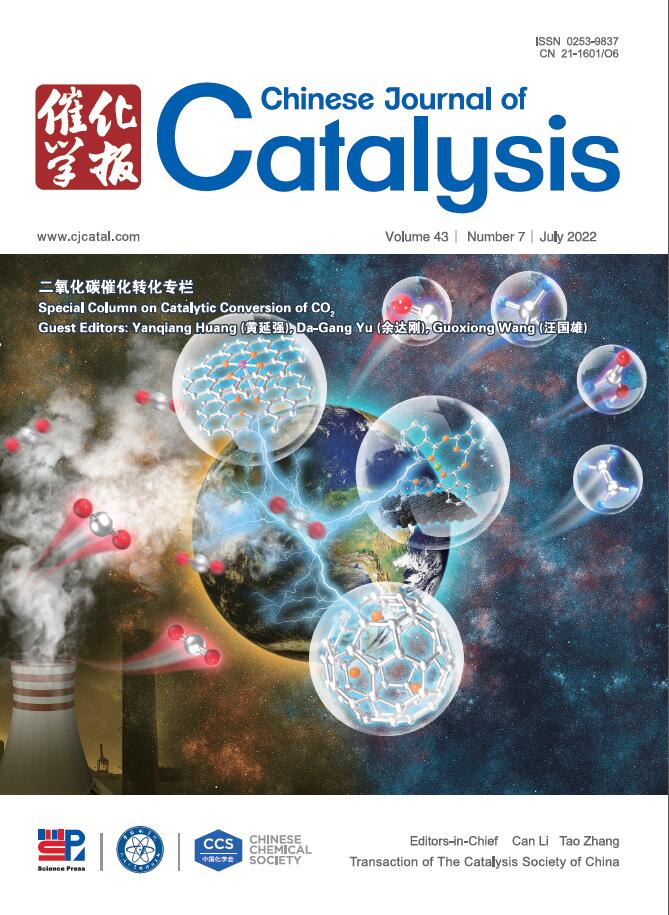LSPR-assisted W18O49/ZnO S-scheme heterojunction for efficient photocatalytic CO2 N-formylation of aniline
IF 15.7
1区 化学
Q1 CHEMISTRY, APPLIED
引用次数: 0
Abstract
Designing highly efficient photocatalyst for the valorization of CO2 is an ideal strategy to reduce greenhouse gas emissions and utilize solar energy. In this study, a S-scheme heterojunction photocatalyst is fabricated by solvothermal impregnation of ZnO on W18O49 for photocatalytic CO2 N-formylation of aniline. The localized surface plasmon resonance effect of W18O49 improves the absorption capacity for long-wave light significantly, and the hot electrons generated in W18O49 with a high energy can migrate to the conduction band of ZnO and thus enhance the photocatalytic reduction ability. Meanwhile, the S-scheme heterojunction facilitates the separation of photoinduced charge carriers and preserves the redox ability of W18O49/ZnO composite photocatalyst. The conversion of aniline reaches 99.1% after 5 h reaction under visible light irradiation at room temperature with an N-formylaniline selectivity of 100%. A possible photocatalytic reaction mechanism is proposed. This study paves a promising way for the design of highly efficient photocatalyst and the sustainable utilization of CO2.
求助全文
约1分钟内获得全文
求助全文
来源期刊

Chinese Journal of Catalysis
工程技术-工程:化工
CiteScore
25.80
自引率
10.30%
发文量
235
审稿时长
1.2 months
期刊介绍:
The journal covers a broad scope, encompassing new trends in catalysis for applications in energy production, environmental protection, and the preparation of materials, petroleum chemicals, and fine chemicals. It explores the scientific foundation for preparing and activating catalysts of commercial interest, emphasizing representative models.The focus includes spectroscopic methods for structural characterization, especially in situ techniques, as well as new theoretical methods with practical impact in catalysis and catalytic reactions.The journal delves into the relationship between homogeneous and heterogeneous catalysis and includes theoretical studies on the structure and reactivity of catalysts.Additionally, contributions on photocatalysis, biocatalysis, surface science, and catalysis-related chemical kinetics are welcomed.
 求助内容:
求助内容: 应助结果提醒方式:
应助结果提醒方式:


